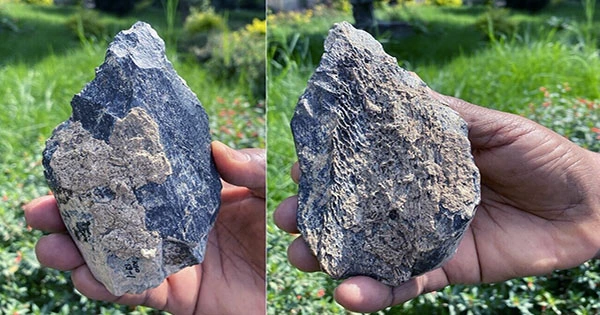Although we’re not talking about our species, Homo sapiens, tangible proof of prosperous settlements in southern Britain earlier than anticipated is provided by flint axes going back to roughly 600,000 years ago. Instead, Homo heidelbergensis, an extinct ancestor of Neanderthals renowned for his thick brow and cunning talents, is thought to have created these bone scraping implements. A group of archaeologists from the Universities of Cambridge, Kent, and the Max Planck Institute for Evolutionary Anthropology recently analyzed the artifacts, according to a research published this week in the journal Royal Society Open Science.
Infrared-radiofluorescence (IR-RF) dating, a contemporary method, has finally determined the age of the objects, which were first uncovered in Canterbury’s suburbs in the 1920s by local workmen. By determining when specific minerals at the location were last exposed to sunlight, this amazing approach may determine when the artefacts were most likely buried. This demonstrated that the tools were made between 560,000 and 620,000 years ago, more than 300,000 years before the evolution of our species, Homo sapiens. Additionally, Britain was still connected to continental Europe during this period.
Between 840,000 and 950,000 years ago, it is believed that extinct human ancestors made their initial appearance in Britain; however, these first appearances were brief. This most recent discovery lends credence to the hypothesis that H. heidelbergensis colonized Britain somewhere between 560,000 and 620,000 years ago, during a warm era. To put things in perspective, the progenitors of modern populations of Homo sapiens outside of Africa did not depart from that continent until roughly 60,000 years ago.
Before that, H. sapien attempted a few rounds of migration, but they didn’t seem to take. Other early human species, such H. heidelbergensis, had already colonized remote regions of Eurasia hundreds of thousands of years earlier. Despite being a completely different species from us, H. heidelbergensis resembles the stereotype of a caveman in several ways. They were well adapted to retaining heat and living in colder habitats because to their pronounced brows, bigger braincases, and broader bodies.
They were also skilled tool users and craftspeople, as we can see from the recent discoveries. Numerous hand axes, some of the oldest hand axes ever found in Europe, were among the original findings. A “scraper” used to prepare the skin, fur, and flesh from animal corpses is another recent discovery at the site. Although little is known about their early excursions into Britain, the abundance of tools found there would appear to indicate that they were at ease there.
“The processing of animal hide is frequently linked to scrapers from the Palaeolithic. Therefore, the discovery of these artifacts may indicate that people at this period were processing animal skins for use as clothing or as building materials, according to a statement from Dr. Tomos Proffitt, research author from the Max Planck Institute of Evolutionary Anthropology. The variety of stone tools found in both the initial discoveries and our more recent, smaller excavations “indicate that hominins were prospering and not simply surviving in what was to become Britain,” according to the study.














